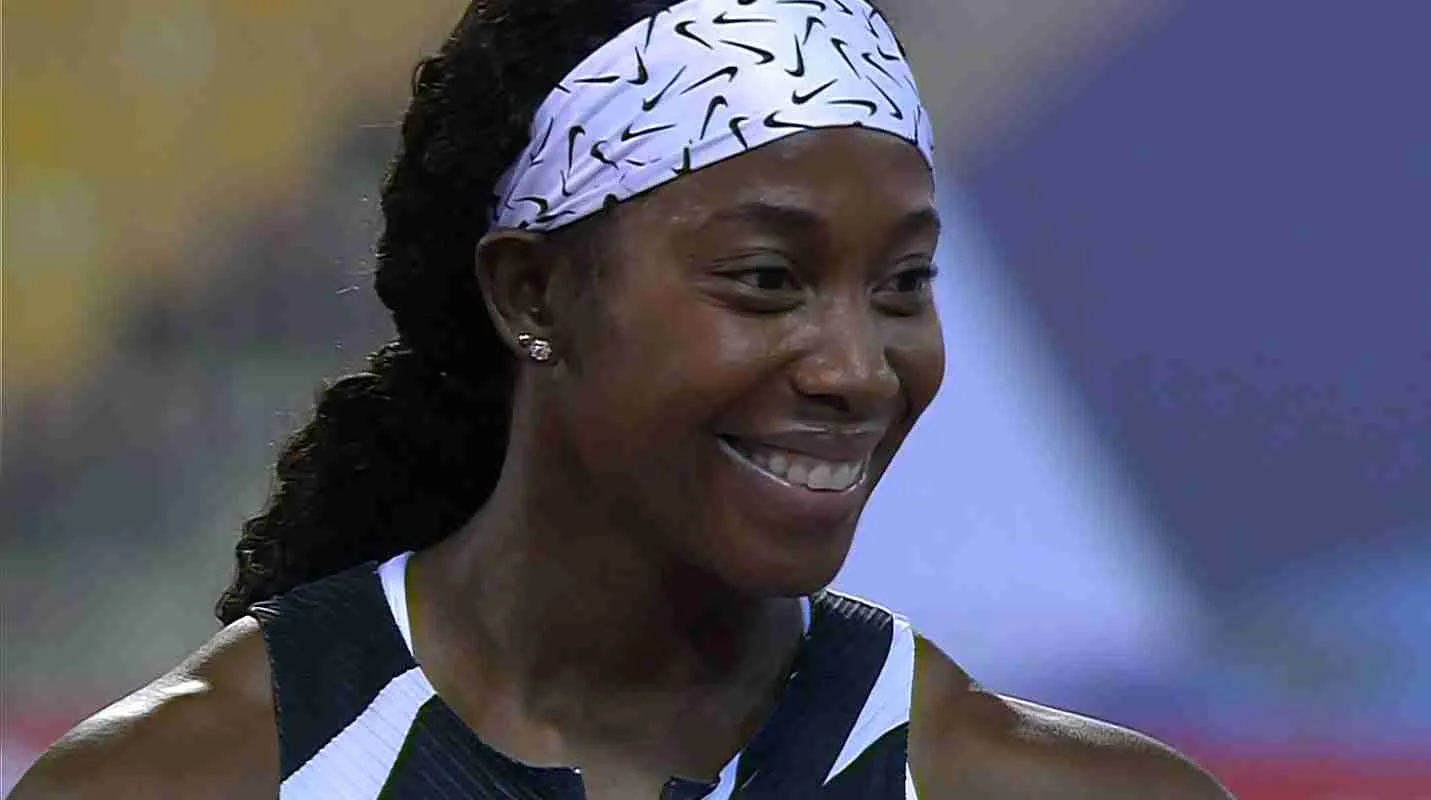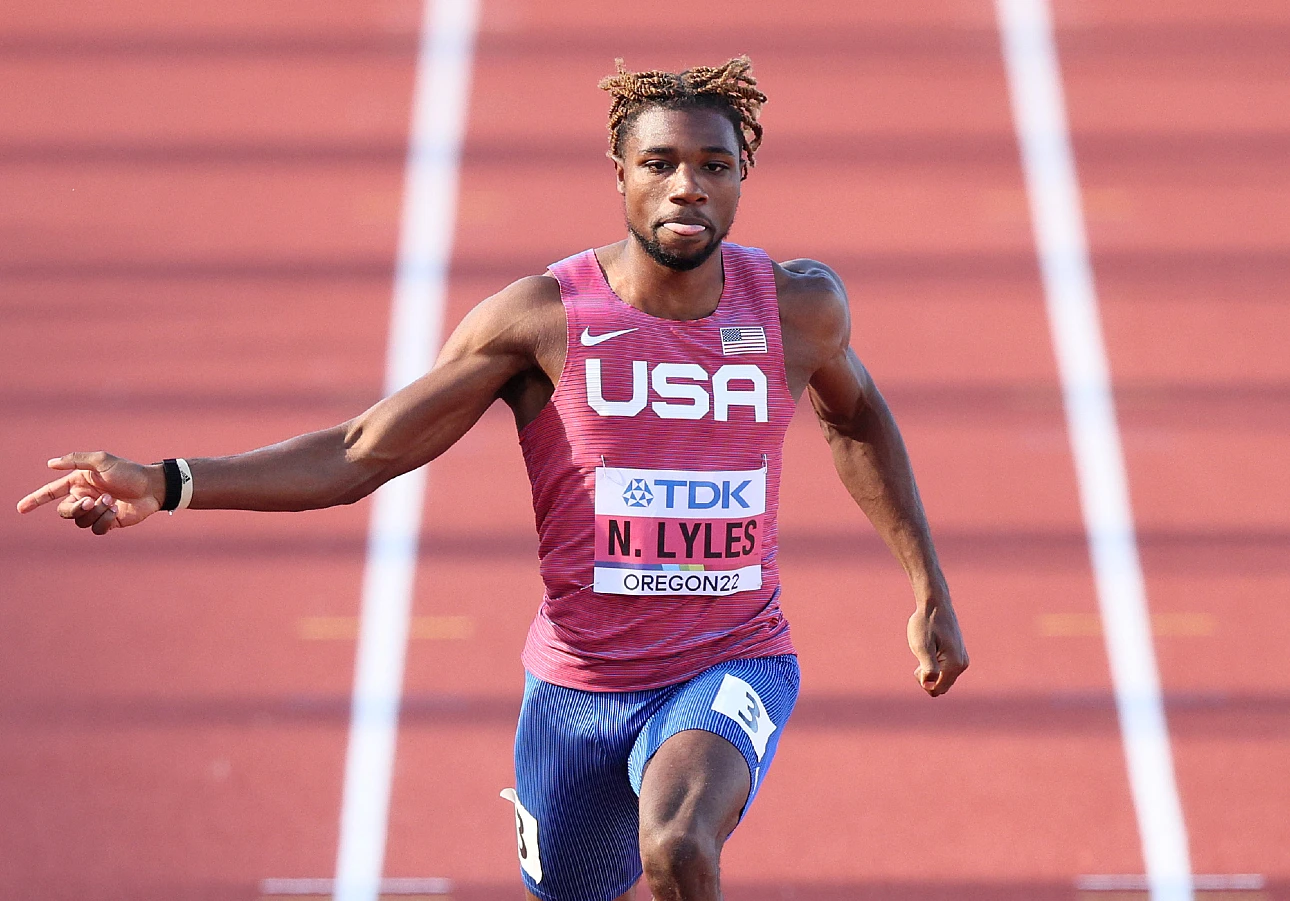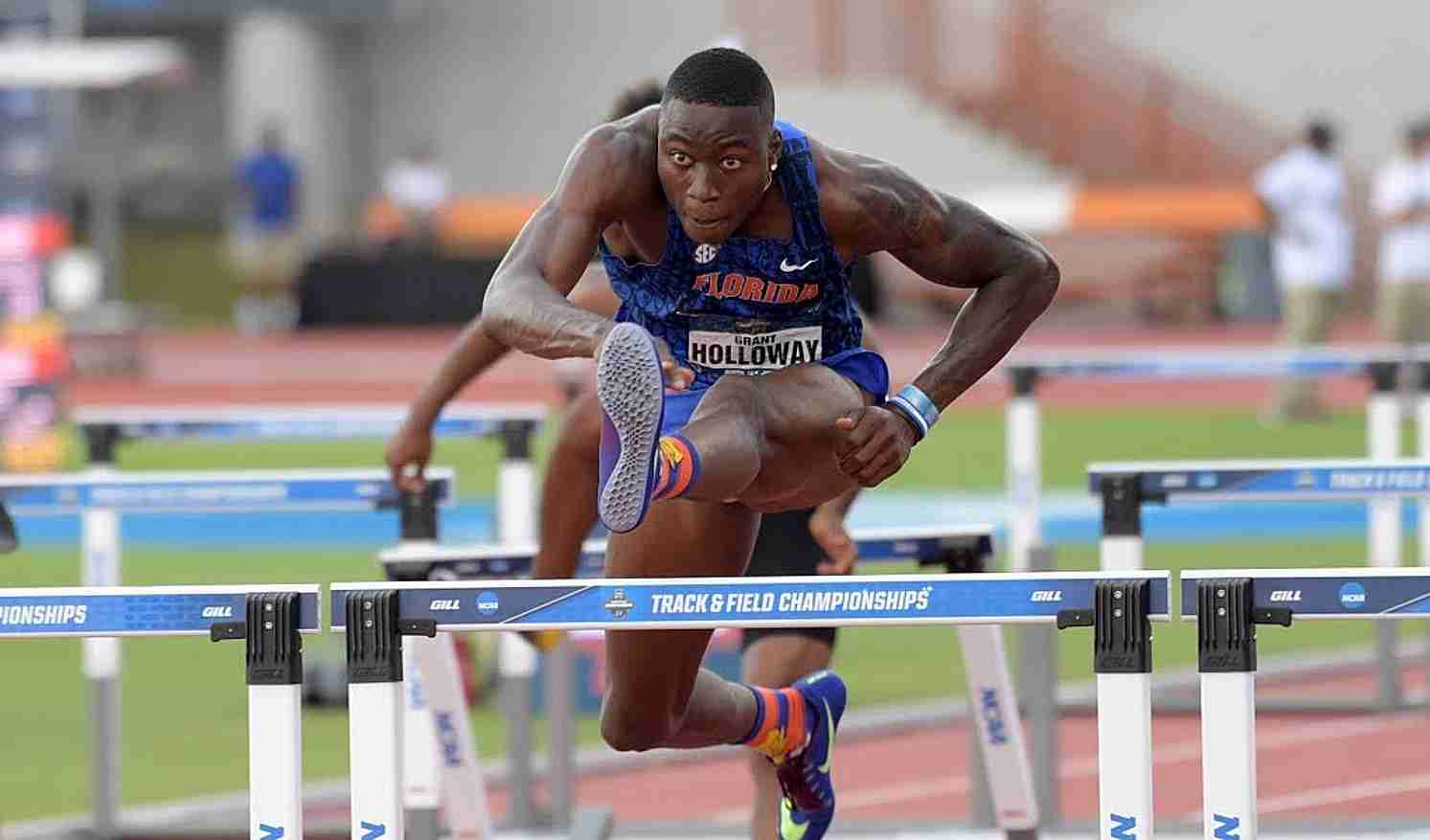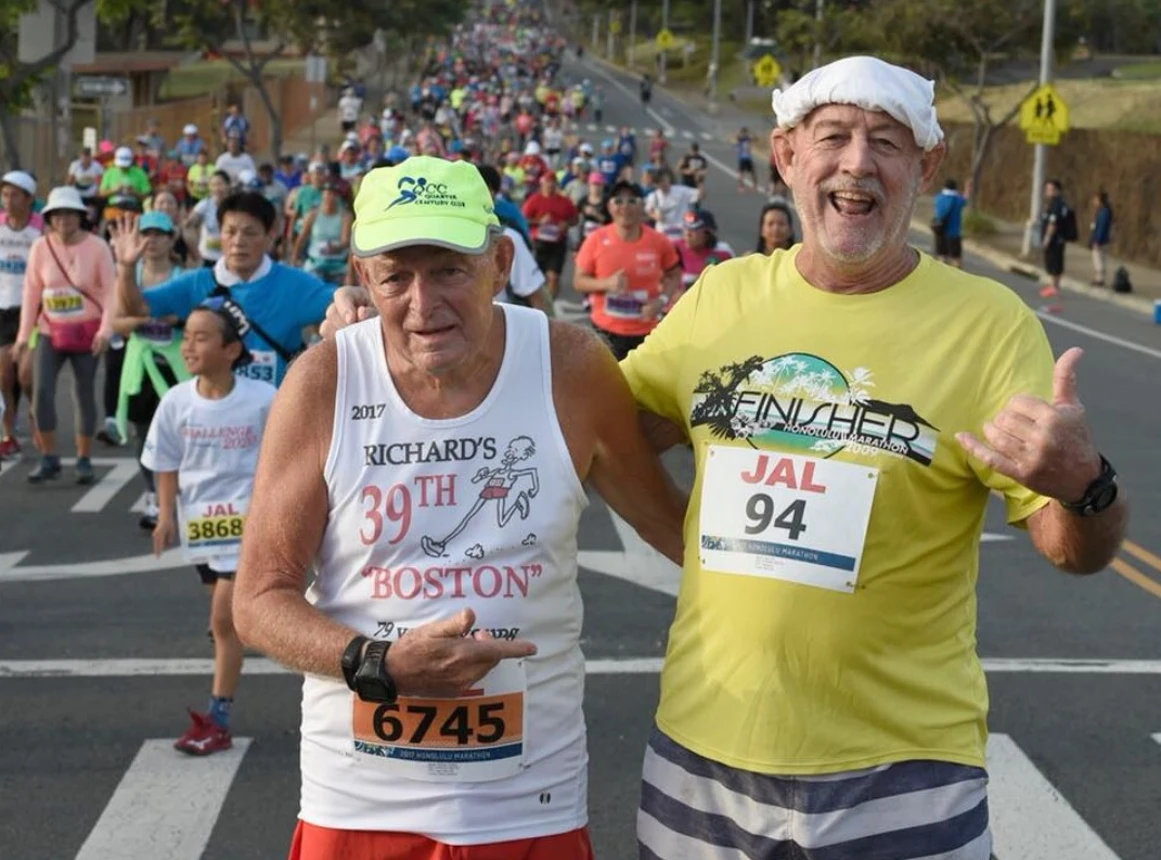
By Rich Sands, @sands
(c) 2022 Race Results Weekly, all rights reserved
HONOLULU (Race Results Weekly) — The Honolulu Marathon is celebrating its 50th running this year, and a lot has changed over the years –the route, the entry fee, the size of the field– but there has been one constant in each edition. Actually, two: Gary Dill and Jerold Chun. Both men have participated in every edition of the venerable race, and will take on the 26.2-mile course once again this Sunday, December 11.
The first edition of the Honolulu Marathon was held in 1973 and just 151 runners completed the race. Duncan MacDonald, who would represent the U.S. in the 5000m at the 1976 Olympics, won that first edition in 2 hours, 27 minutes and 34 seconds. Chun was just 14 years old and finished 20th overall, while the 29-year-old Dill was 140th. And they’ve come back every year since. No matter what. Read More: Philadelphia Distance Run Half-Marathon 2022 results and prize money
For Chun, it was a chance for family bonding. At the encouragement of his father, Hing Hua Chun, Chun and his two brothers and three stepsisters ran the race. “My father went by the nickname Hunky, so we were known as the Hunky Bunch at the time,” Chun told Race Results Weekly of his blended family. “It was like The Brady Bunch.”
Chun had done some local road races with the Mid-Pack Road Runners Club, and also participated in track and field in the summertime, but he’d never run that far before. “We weren’t really too savvy about what we were getting into,” he said. “But it wasn’t anything traumatic. There were no crowds, it was just getting out there and running on the road.”
He finished in 3:09:20, a very respectable 7:13-per-mile pace. In 1978, at age 19, he lowered his personal best to a swift 2:47. “There were some Olympians running that year,” he recalled. “One fellow, Kenny Moore [who competed for the U.S. in the marathon at the 1968 and 1972 Olympics], paced me for part of that run, I think out of amusement because it was so easy for him. And that allowed me to have a fast time.”
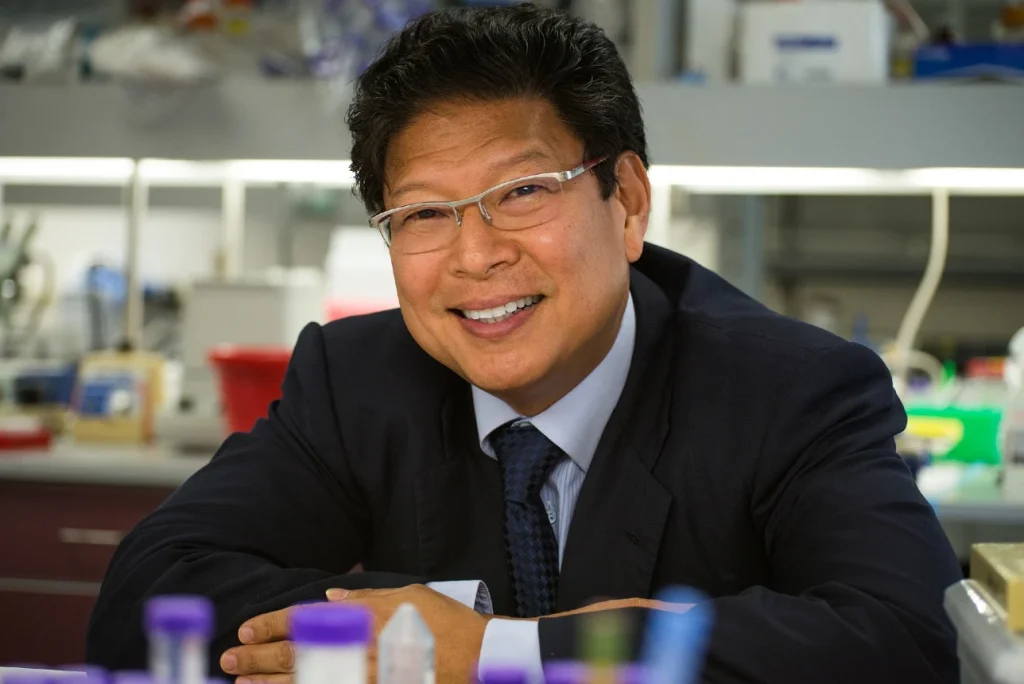
Members of the Chun family kept coming back to the starting line each year, but eventually only Jerold was keeping the streak intact. “It’s really the ties to home and ties to the past and the people you knew or still know,” the 63-year-old Chun, a highly regarded neuroscientist in La Jolla, Calif. said.
For Dill, the motivation was more practical. He’d been living in Honolulu since his early 20’s, when he came here to earn his Master’s degree in economics from the University of Hawai’i. After a particularly indulgent Thanksgiving dinner, he and his two roommates decided that training for the new race would be a great way to burn some calories.
“So the three of us took a blood oath that we would do this,” he recalled with a laugh. “It cost us $2 for the entry fee.”
Their goal was to finish the race in under 5 hours, the time cutoff to earn a finisher’s T-shirt. “With just a few weeks before the race, we had a lot of training to do,” said Dill, now 78 and a retired fisherman. Read Also: Merrie Mile will give Matthew Centrowitz first race in over a year
“We figured out that if we did a 10-minute pace, we’d have it knocked [to get the T-shirt.] We jogged a 5-mile training run and figured we could get that pace. But we had to get serious. For our longest training run, we did a 10 miler. Ah, the ignorance of youth!” (One of the roommates bowed out of the race, but came back to run it with Dill the following year.)
Despite the minimal training, Dill finished in 4:57:23, earning his T-shirt with more than two minutes to spare. As he got more serious, he would take his personal best down to 3:23 a few years later. “I was really fit, and trying for the 3-hour mark,” he said. “I think that’s a goal of everyone who gets serious about it. I was on pace, but my body was breaking down.”
Not surprisingly, keeping such a daunting streak alive has presented challenges. One year, Chun was attending a conference in upstate New York and had a travel marathon just to get to the starting line: from New York to Chicago to San Francisco and then finally on to Honolulu. “There was a storm and they had to de-ice the plane in Chicago,” he explained. “I remember thinking, ‘I’m not going to make it.’ I didn’t get in until after midnight and the race starts at 5 a.m. That was a challenging time.”
And, of course, both men have had to deal with injuries that have compromised training. “My real love in sports was, and still is, rugby,” Dill said. “I played here for many years. And one year, when I was about 30 and at the height of my rugby game, we were playing in the spring up at the University of Hawai’i, and it rained like heck and the field was muddy and I slipped and tore the cartilage in my left knee.”
After taking time to rest, he still couldn’t run without pain, and in October –-less than two months before the race-– he had surgery to repair the cartilage. “Days passed, weeks passed, and finally the marathon came. I hadn’t run a single step since June.
“I hadn’t done any training,” he said. At about 4 miles into the race, as the course approached the Diamond Head volcanic crater his knee was wobbling. “I got to the bottom of the hill and I’m like, nope, I’m not doing it,” he recalls. “I’ve got 22 miles to go and I can barely run!”
He committed to getting a little bit farther and then he would turn off the course and head to his brother’s house to recuperate. But a DNF was not to be that day. “I walked up Diamond Head, and by the time I got to the turning point [where I would drop out], I realized that my knee didn’t hurt,” he said. “I was tired, but walking felt OK. It was running that was hurting. The sun was coming up and it was a nice day, so I walked the rest of the way — 22 miles.”
When the in-person event was cancelled in 2020 due to the pandemic, both men completed the virtual challenge. “I ran it on a treadmill and that was truly torture,” Chun said. “Never want to do that again.”
They were happy to get back on the streets of Honolulu last December and neither sees their streak ending any time soon. “What it’s morphed into is a celebration to get together with family and friends, and also just to appreciate being alive, especially after some of the trying times we’ve had,” Chun said. “And being healthy enough to complete the marathon!”
He also points to the top-notch organization and encouraging atmosphere that make this a can’t-miss race. “Kudos to the Honolulu Marathon Association and all of the volunteers who make this run happen,” Chun said. ‘Because that is what has allowed it to be sustainable.
“There is so much what we call, ‘kokua,’ [the Hawaiian word for ‘help’]. People are so kind and helpful. In fact, I’d highly recommend it for first-time marathoners because there’s so much support.”
And what keeps Dill coming back year after year?
“The T-shirt, man,” he said, only slightly joking. “I got 49 of ’em. Do you?”
PHOTO: Jerold Chun in his office (photo courtesy of Jerold Chun)
PHOTO: Gary Dill (right) with Richard Carling on the course of the 2017 Honolulu Marathon (photo courtesy of the Honolulu Marathon)

